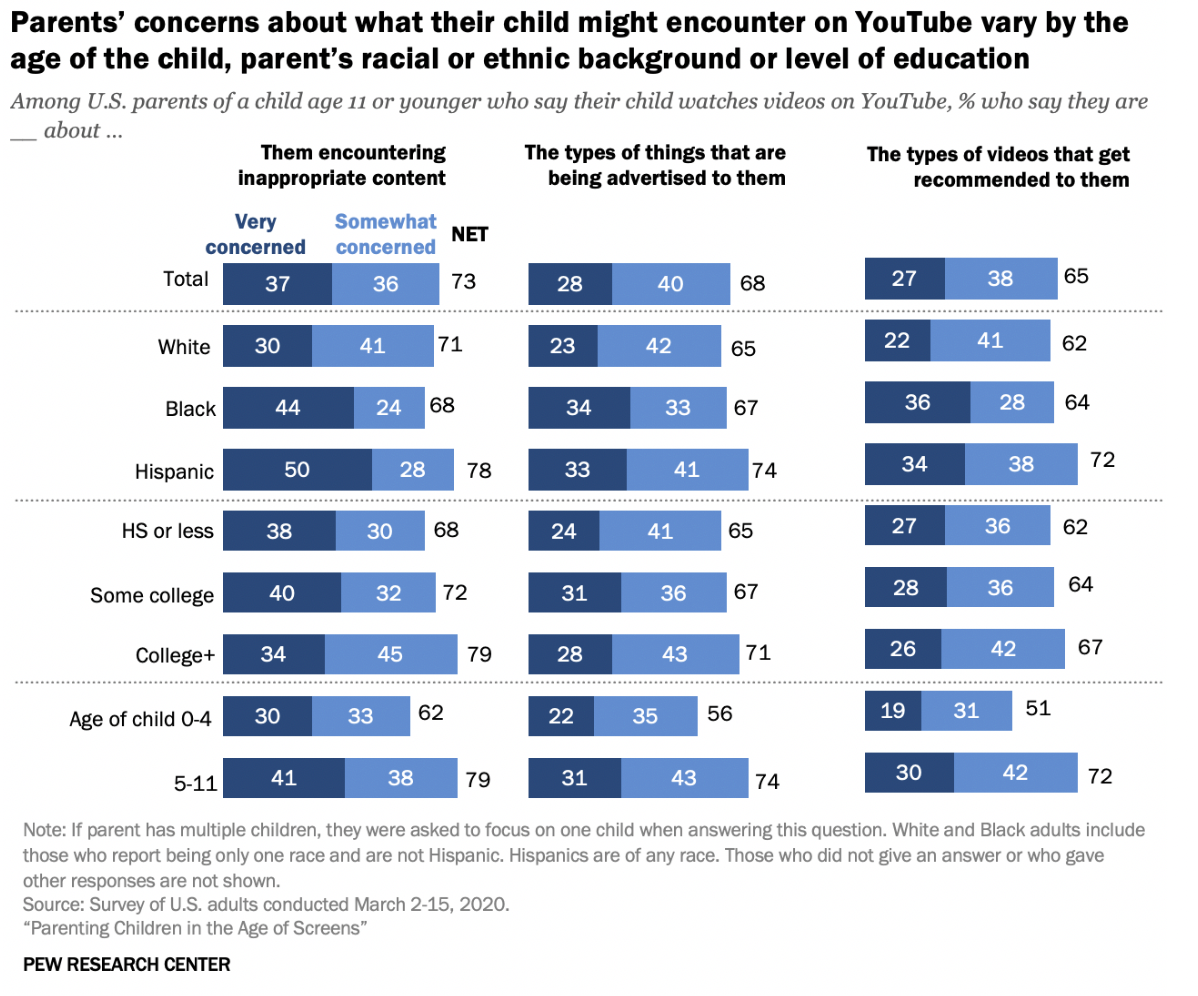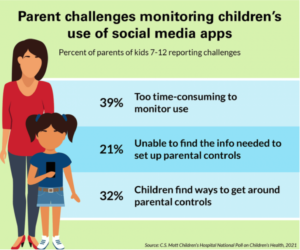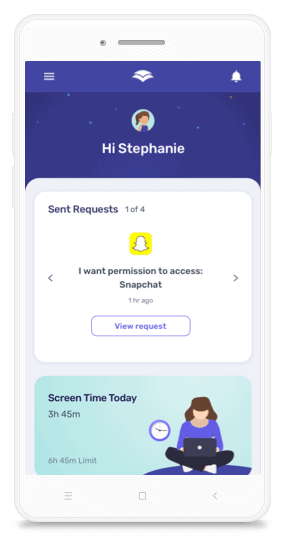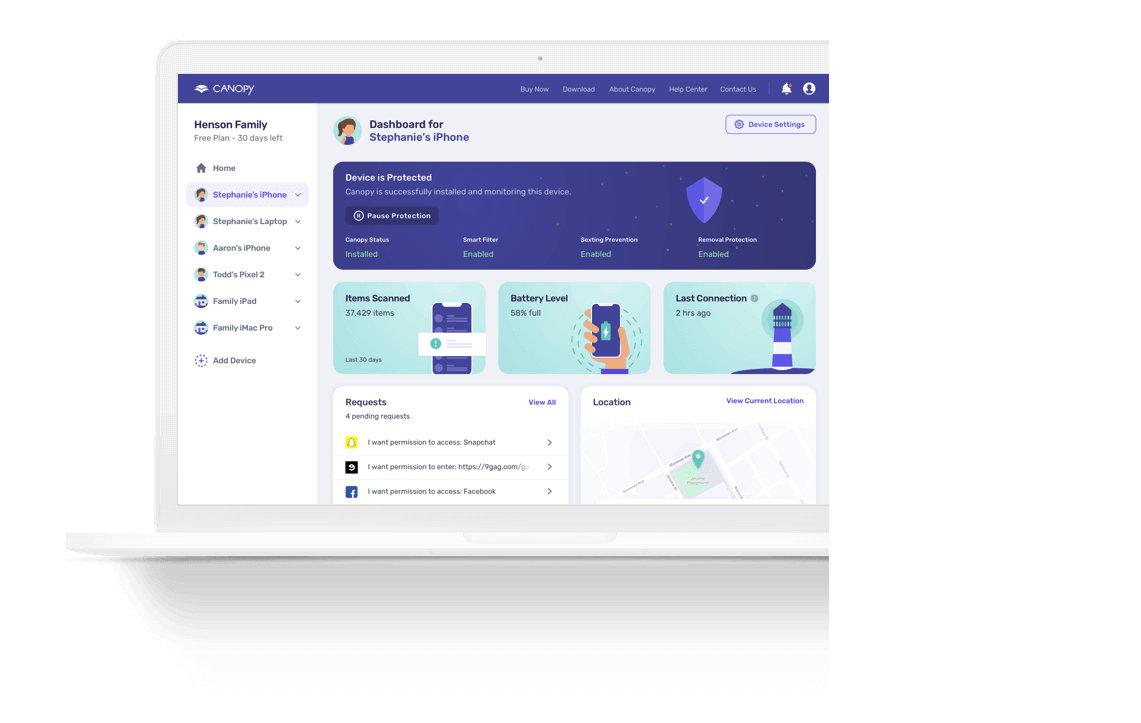The internet can feel like an overwhelming place for parents trying to protect their kids.
You want to do the right thing, but it’s easy to get caught up in worry — checking, double-checking, and wondering if you’re doing enough. It’s exhausting. And in moments of stress, we may find ourselves reacting, trying to control every digital move our children make.
But the reality is, the online world isn’t going away. Instead of trying to shut it all down, what if we shifted our focus? With a few practical strategies, you can create a safer digital space for your child without feeling like you’re constantly playing catch-up.
That’s where internet safety tips for parents come in — helping you find the balance between protection and trust, without relying solely on restrictions or fear.
Understanding the types of threats children face online, from explicit content to cyberbullying, can help you be more proactive. In fact, many parents now use solutions like iOS parental control settings or explore tools for blocking inappropriate content on TikTok to reduce digital risks early on.
What Is Digital Parenting?
Digital parenting is about being actively involved in your child’s online world—understanding what they do, setting boundaries, and guiding them through the digital space. It includes everything from conversations about device habits to staying informed on the latest threats and trends.
It’s more than just managing screen time or blocking a few websites. It’s about building digital trust, being available when questions arise, and using resources like online safety tips for parents to stay ahead of the curve.
As social media becomes a dominant part of children’s digital lives, parents should also keep an eye on platform-specific risks. If your child is on Instagram or Snapchat, reviewing Instagram parental controls and Snapchat parental control settings can be a helpful first step toward safer usage.
These small steps are all part of broader social media safety tips for parents, allowing you to create a more supportive and structured online environment. Combined with open communication and tools like screen time guides, internet safety for parents becomes less about panic — and more about prevention and empowerment.
By using tools like parental control apps and staying engaged, parents can help their kids navigate the internet safely, giving them the freedom to explore while staying protected from harm.
11 Online Safety Tips for Parents
Below are 11 online safety tips for parents. We teach and practice these with our community daily.
1. Keep open lines of communication
The key to keeping your child safe online? Be open and honest. Talk to them about the internet—social media, the sites they visit, and the things they see. These early conversations are essential for building trust and helping them navigate their digital world safely.
If your child encounters inappropriate content, don’t shy away from the topic. Learn how to talk to your child about inappropriate pictures calmly and clearly. If they’ve posted something inappropriate or behaved badly online, address it directly—but without losing your cool. Overreacting can make them shut down or hide things in the future.
As your child grows, the conversation will need to evolve. What worked when they were 8 might not work when they’re 13. If things don’t go smoothly at first, try a different approach. The goal is to create a space where they feel comfortable coming to you, no matter what they’ve seen or done online. The more you react with patience and understanding, the more likely they are to open up.
2. Be present in your child’s digital life
Being present for your child online means paying attention to what they’re doing and how much time they spend in front of a screen. Keep an eye on their daily routine—how long are they on their phone or computer? If it starts to feel like too much, gently steer them toward other activities that don’t involve screens.
To stay informed, consider using a screen time app guide for parents that helps you monitor and manage device use across platforms. You don’t need to hover or spy—but understanding how they use platforms like TikTok or Snapchat helps you offer relevant support.
If you’re concerned about exposure on certain apps, get familiar with tools like Snapchat parental control or how to block inappropriate content on TikTok. These tools give you more confidence and help protect your child from harmful content—without constant confrontation.
3. Model healthy digital behaviours
Kids are always watching — and learning from — what we do. That’s why one of the most important online safety tips for parents is to lead by example. Be mindful of your own screen time, especially when you’re with your child. If you’re asking them to cut down on Instagram or YouTube, it helps if you’re also putting your phone away during meals or family time.
Most of us spend a lot of time in front of screens for work, but it’s key to take breaks and step away. When your kids see you practicing balanced digital habits, they’re more likely to pick them up and follow your lead.
4. Limit where, when, and how long your child uses technology
Managing screen time isn’t just about avoiding inappropriate content—it’s about setting boundaries that support your child’s development. Too much time on screens, especially at night, can disrupt sleep and reduce focus. Creating limits around when and where tech is allowed helps reduce those risks.
For example, keep bedrooms and mealtimes as “tech-free” zones. Use screen time boundaries to make room for schoolwork, outdoor play, and family connection. You can also use tools like best screen time apps to set device limits and encourage healthier tech use.
If you’re concerned about YouTube specifically, learn how to block YouTube on iPhone or how to block YouTube on Android to prevent exposure to addictive or inappropriate videos.
By setting limits on where, when, and how long your child can use devices—and combining that with open conversation and example-setting—you’ll build a stronger foundation for digital well-being.
5. Monitor online activity
Beyond knowing when, where, and for how long, you need to know what your children are seeing and doing online.
Even ‘child-friendly’ content and apps can lead to the darker parts of the web. YouTube is notorious for marketing inappropriate videos to children through its auto-play feature.
Considering 80% of all parents with a child age 11 or younger say their child watches videos on YouTube, with 53% doing so daily, there’s reason to be concerned.

If your child is using an app, the internet, or an online gaming system, make sure you keep tabs on what they’re doing and who they may be doing it with.
Our next tip can help.
6. Use parental controls and parental control apps
You can’t be everywhere at once — especially if you have multiple children. And as your child becomes a teenager, they’ll naturally use technology more independently.
That’s where parental control becomes essential. But what is parental control? It refers to the settings and tools that help restrict a child’s access to inappropriate content, limit screen time, and manage which apps and websites they can use.
Today, many families turn to parental control apps like Canopy for real-time protection. These tools go beyond simple website blocking. For example, Canopy uses advanced AI to detect and block inappropriate images and videos across all browsers—even in places parents might overlook, like lingerie ads on retail websites.
Beyond filtering, Canopy helps prevent sexting, restricts dangerous apps, and empowers kids to make safer online choices. If you’re unsure how it stacks up, you can explore Canopy parental control app reviews from other parents navigating the same concerns.
Parental controls are also available on many devices and platforms. For iOS, see this guide to iPhone parental controls, or explore Windows 10 parental control if your family uses PCs.
|
7. Explain internet safety in an age-appropriate way
There will likely come a time when your child sees or experiences something online they shouldn’t. This isn’t your fault, it’s reality.
|
This is why it’s crucial to have age-appropriate, open conversations with your kids about online safety.
For younger children, that may involve explaining what to do if they see a photo of someone without clothes. For older kids, it’s important to talk about the dangers of sexting and sending inappropriate pictures.
If you’re not sure where to start, our guide on how to talk to your child about inappropriate pictures breaks the conversation down into manageable steps—without panic or shame.
As your child grows, they’ll begin pushing back on rules and filters. That’s normal. The more transparent you are about why those rules exist — and the dangers you’re helping them avoid — the more likely they are to make informed decisions when you’re not around.
8. Talk to your child’s friend’s parents about online safety rules
It’s a good idea to get on the same page as the parents of the children your child spends time with.
Find out if they:
- let their child have technology in their bedroom
- have video games that contain violence
- use parental controls
- Etc.
Other parents may not have the same approach to children’s internet safety as you but hopefully, they’ll be mindful of your rules when your child is in their care.
If they aren’t, you can introduce a rule that your child does not go to that friend’s house. Reassure your child that they can still be friends with that person but will need to hang out at your house.
9. Follow your children and their friends on social media
One of the best internet safety tips for parents is to follow your child and their friends’ social media accounts.
This gives you an insight into the online world your child exists in and what they and their friends share.
This is only relevant for children old enough to be on socials in the first place.
When is your child old enough to be on socials? We recommend following the restrictions of the apps themselves: 13 years old on average.
But in reality, many children are getting access sooner. A 2021 study shared that half of children aged 10-12 and one-third of children 7-9 years use social media apps. That’s even more reason to be present on the app too.

This won’t end all of your worries though. The image below shows three challenges parents like you are facing when it comes to social media apps.
For added protection, consider using filters to block inappropriate content on TikTok or even block Instagram on iPhone entirely if needed.
10. Be mindful of all online content
Some types of harmful content are obvious—violence, nudity, sexual content. Others are more subtle but equally damaging.
Influencers posting extreme diets, excessive product comparisons, or unattainable body standards can all shape your child’s perception of reality. These are especially dangerous during the teenage years.
Our guide to mental health activities for kids explores ways to counteract the impact of this kind of content. And with tools like Canopy, you can automatically block adult content and redirect your child toward safer browsing—even on YouTube. See our post on how to block YouTube content for more tips.
Helping your child develop a healthy relationship with tech is just as important as filtering content.
11. Listen to your children and check in regularly
One of the best internet safety tips for parents is also the simplest: check in.
Ask questions regularly—without judgment. Is your child being bullied? Have they received a message from a stranger? Has someone asked them for a photo?
If you’ve already talked about inappropriate pictures, your child is more likely to tell you when something crosses the line. And if not, it’s never too late to start.
For families navigating tough topics, our guide on supporting children’s mental health offers ways to stay connected and emotionally supportive—online and offline.
Why Is Online Safety Important for Parents?
Children have more access to the internet than ever and with that access comes the potential for them to experience:
- Cyberbullying
- Sexual predators and groomers
- Violent imagery and video
- Pornography
Did you know that 54% of teens have seen online pornography before the age of 13?
That exposure can make a lasting impression The effects of porn on teenagers range from having unrealistic expectations of what sex is like to thinking aggression and even rape are normal behaviors.
That’s why it’s important you understand the dangers you’re battling and take steps to protect your children.
Treat this article as your go-to parent guide to internet safety.
And don’t forget to use tools to help where you can. For example, Canopy can help restrict, monitor, and educate your children on online safety. You can get it here.
FAQs
What are the most important online safety tips for parents?
Start by having open conversations with your kids about digital behavior. Use parental control apps to set boundaries, monitor device activity, and block inappropriate content. Teach children about privacy, phishing scams, and the importance of not sharing personal information.
What websites should parents be aware of?
Parents should keep an eye on social media platforms like TikTok, Instagram, and Snapchat, as well as lesser-known apps like Discord and Reddit. Many of these have weak content filters, making internet safety for parents a priority.
How can I help my child practice online safety at home?
Model safe behavior yourself—like using strong passwords and questioning suspicious links. Set up parental controls, enable safe search on browsers, and establish device-free times at home. Tools like Canopy can also filter adult content in real time.
Are there internet safety tips for adults too?
Yes! Internet safety tips for adults include using multi-factor authentication, being cautious with what you share online, avoiding unsecured public Wi-Fi, and using secure password managers. Parents should also stay informed about the latest threats kids may face online.
What is the best way to talk to kids about online safety?
Be honest and age-appropriate. Avoid fear-based language and instead focus on empowerment and trust. Ask them what apps they use, discuss privacy settings, and reinforce that they can always come to you if something feels off.






